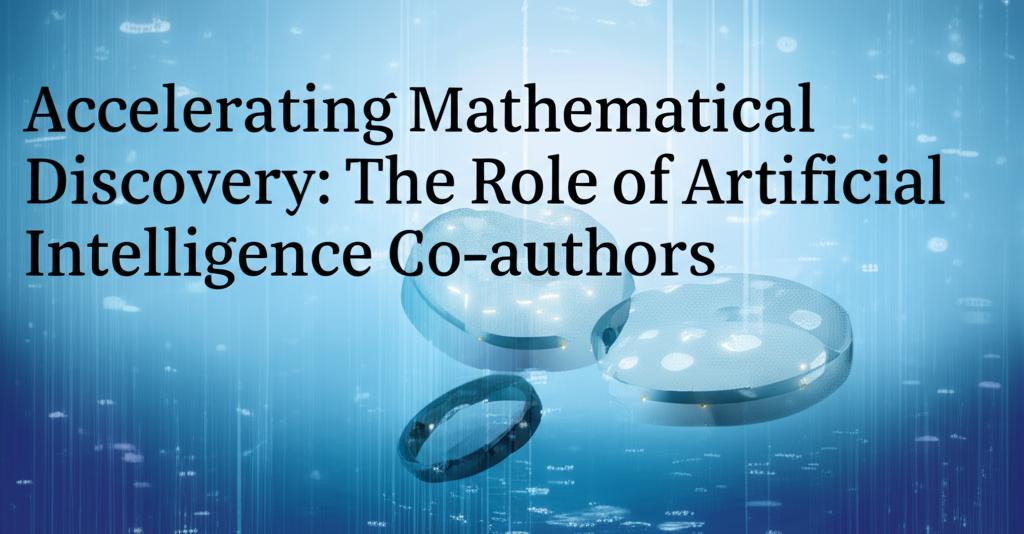Artificial intelligence (AI) is rapidly transforming the landscape of mathematical research, transitioning from a computational tool to a collaborative partner. This shift promises to significantly accelerate the pace of discovery and democratize access to advanced mathematical concepts.
Traditionally, mathematical breakthroughs have been the result of painstaking individual or small-group efforts, sometimes spanning decades or even centuries. AI is poised to revolutionize this process. Programs like DARPA's Exponentiating Mathematics (expMath) initiative, announced in May 2025, aim to develop AI systems that can act as "co-authors" to mathematicians. These AI co-authors will assist in breaking down complex problems into smaller, manageable components called lemmas. This approach is expected to allow researchers to build upon each other's work more efficiently, thereby speeding up the overall pace of discovery. The expMath program will explore various AI technologies, including large language models, reinforcement learning, and program synthesis, with a strong focus on the practical needs of mathematicians and bridging the gap between the AI and mathematics communities.
The potential impacts of AI in mathematics are multifaceted:
- Accelerating Discovery: AI can analyze vast datasets, identify patterns, and generate conjectures that humans might overlook. This can significantly speed up the process of forming and testing hypotheses. For instance, AI can explore a vast number of potential mathematical statements and assist in proof development and verification.
- Democratizing Access: AI tools can make specialized mathematical knowledge more accessible. AI assistants can explain complex terms and concepts, lowering the barrier to entry for those new to a particular field, which traditionally requires years of background study. This could also transform how mathematics is taught and learned at all levels.
- Enhancing Collaboration and Accuracy: AI can facilitate collaboration among larger teams of mathematicians by helping to manage complex proofs and ensure accuracy. Tools that integrate AI with "proof checking" software, like Lean, can help avoid errors more quickly and allow for more effective peer review.
- Solving Complex Problems: AI frameworks like DIMON (Diffeomorphic Mapping Operator Learning), announced in early 2025, are enabling personal computers to tackle massive mathematical problems previously requiring supercomputers. DIMON efficiently predicts solutions to partial differential equations, which are crucial in modeling complex systems across various scientific and engineering fields. This can reduce computation times from days to seconds.
- Improving Mathematical Writing: AI is also revolutionizing the creation and editing of mathematical content. AI-powered handwriting recognition can digitize handwritten notes and equations, saving time and reducing errors. AI writing assistants can improve the clarity, readability, and structure of mathematical papers.
While the prospect of fully automating mathematical research is still a subject of discussion, mathematicians anticipate that AI will fundamentally change research practices by augmenting human intuition and creativity. Even as AI models become more sophisticated, with some demonstrating capabilities approaching high-level performance in mathematical competitions, experts emphasize that humans currently maintain a creative edge, particularly in recognizing the "beauty" or significance of unsolved problems.
However, challenges remain. Current datasets used for training AI in mathematics are often limited to undergraduate-level problems and may not adequately represent the complexities of research-level mathematics or capture the nuances of mathematical workflows. There's a recognized need to develop datasets that include "motivated proofs," emphasizing reasoning processes, and workflows that reflect actual research practices.
Several AI tools are already making an impact in mathematics education and research, including:
- Julius AI: Known for its sophisticated math-solving engine, ability to scan and solve problems, and provide chat-based explanations.
- Wolfram Alpha: A comprehensive computational knowledge engine capable of handling a wide array of mathematical queries.
- Photomath: An AI-powered mobile app that allows users to capture images of math problems and receive detailed solutions.
- Microsoft Math Solver: Offers a user-friendly interface for inputting problems (manually or via scanning) and receiving comprehensive solutions.
- SymPy: An open-source Python library for symbolic mathematics.
- Desmos: Utilizes AI to enhance mathematical visualization through interactive graphs.
The integration of AI into mathematics is not just an incremental improvement but a paradigm shift. As these technologies continue to advance, they are expected to foster a more collaborative, efficient, and accessible environment for mathematical discovery, potentially unlocking breakthroughs across a wide range of critical fields, from cryptography and computer science to materials science and medicine.

